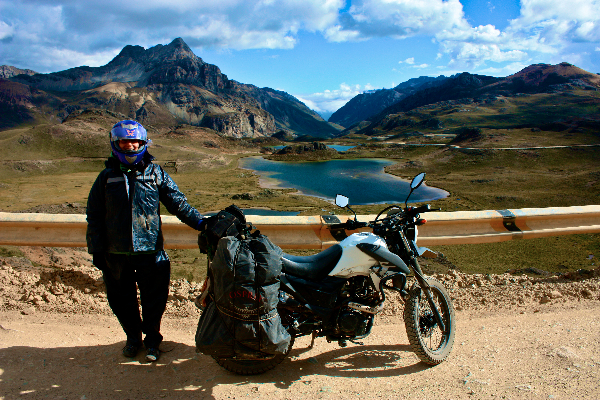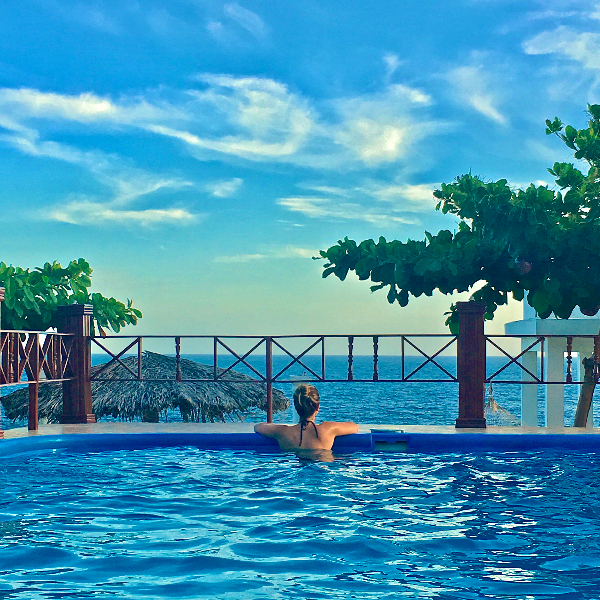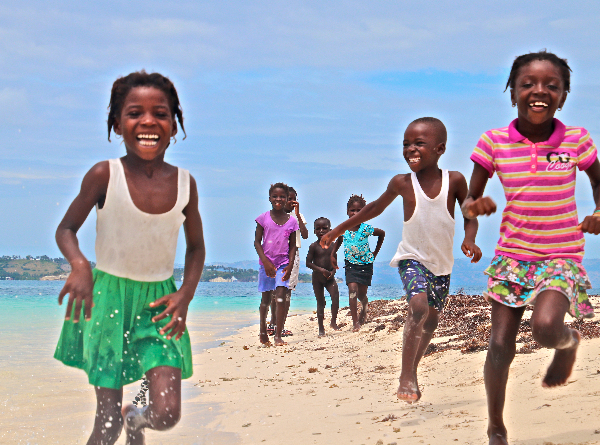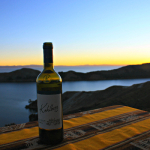Backpacking in Haiti
It’s been a while since I posted here! I recently gave up the nomadic lifestyle I loved so much and moved to NYC. Then I got super busy, because even if you aren’t actually busy, there’s something about living in this big, bustling city that gives you the illusion you are. I worked, but continued to travel internationally whenever my wallet schedule would permit. Deep down, I think part of me was scared to blog again after such a long hiatus. What if I wasn’t good at it anymore? What if I forgot how to use WordPress? WHAT IF IS MY USERNAME AND PASSWORD?

And then I visited Haiti. Haiti is such a special, yet deeply misunderstood country. It would have been remiss of me not to share my experience there.
When I first decided to go to Haiti people were skeptical. I mean even I was skeptical. Information on independent, non-volunteer travel was nearly impossible to find, so my ability to plan was severely limited.
And let’s be real, Haiti doesn’t exactly have the best reputation. You know, probably because it has experienced brutal colonization and slavery, been inordinately affected by natural disasters, and consistently misgoverned. Yet Haiti is so much more than the impoverished, struggling country many people think it to be.
Haiti has an extremely rich and complex past. Haitians gained independence from France as a result of one of the most – if not the most – successful slave rebellions in history. The present culture is a unique blend of African and European traditions heavily influenced by the practice of Vodou. Which by the way, is not about sticking pins into a doll.
I recruited my friend and travel blogger extraordinaire, Alejandra, to accompany me. Our time in Haiti had special meaning for her because she’s from the Dominican Republic, where people tend to have a notoriously negative view of Haiti and its citizens. Ale wanted to document our trip as a way to open Dominican’s eyes to the real Haiti.
Cap-Haïtien
Our first stop was Cap-Haïtien, Haiti’s second largest city and former capital. The extent of our planning was the single night we booked at Ecole Les Poupons, a private primary school whose owners rent out rooms to foreign travelers through Airbnb. The rooms were basic and sweltering, but none of that mattered because they were only $15 per night and the proprietors were lovely, incredibly helpful people. So much so we extended our stay three times!
We arrived in Haiti via a Caribe Tours bus from Santo Domingo, which unless you’re flying directly from the U.S. is the most efficient way. Flights between Haiti and the Dominican Republic (two countries that share the same island, mind you) almost always have a layover in the U.S.
Cap-Haïtien is the perfect starting point for travelers because it’s a little calmer and little less chaotic than Port-au-Prince. That doesn’t mean you won’t nearly get flattened by a motorbike while experiencing extreme sensory overload though; you are in Haiti.
Tourists come to Cap-Haïtien mainly to explore the Sans-Souci Palace, a UNESCO World Heritage Site, and the Citadelle Henri Christophe, both of which are in the nearby town of Milot.
They were impressive and beautiful, but as always, I lack an appreciation for ruins. Some things never change I guess!
Labadee
When people say they visited Haiti while on a cruise, it means their ship docked at Labadee, a beautiful strip of pristine beach leased by Royal Caribbean. I initially recoiled at the thought of visiting a place where one can pay $100 to go on a zip line (more than many Haitians make in a month). Luckily we were convinced by a local blogger to make the trip. We stayed in Labadee Village, which much to my relief was completely separate from Royal Caribbean Labadee.
We only had about 24 hours to spend in Labadee, and we made the most of it by hiring a private boat ($60 after negotiation) to take us to some of the country’s prettiest beaches, including Île Rat Island. And let me tell you, THESE BEACHES.
Alejandra and I were kicking ourselves for almost missing them. With their deep turquoise water and lush green backdrops, they could give any of the postcard-famous beaches of Thailand a run for their money. The only difference? We had them completely to ourselves.
Visiting Labadee could technically be a day trip from Cap-Haïtien, but then you would miss out on the opportunity to watch soccer, eat delicious fried food and dance in the streets with locals. Out of everywhere we visited, Alejandra and I agreed that the residents of Labadee Village were the most inviting.
Budget Accommodation is sadly practically nonexistent in Haiti. We stayed at Norm’s Place in Labadee Village for $80/night, which, while out of our budget, was the only option.
Port-au-Prince
The most efficient way to get to Port-au-Prince from Cap-Haïtien is to take a Sans Souci bus (roughly $16/10 hours). The journey through the mountains is curvy and harrowing, and the horn honking incessant. That being said, the views of the Haitian countryside were nothing short of spectacular.
I was admittedly nervous for Port-au-Prince. We were arriving well after dark and because accommodation was way out of our budget we were staying with people who were basically strangers a “friends of friends of friends” type deal. The way people talk about Port-au-Prince I was imagining it to be some sort of dirty, dangerous, crime-ridden city. And it might be, but that certainly wasn’t the side of it I witnessed.
I really enjoyed my time in Port-au-Prince and a lot of what I saw wouldn’t look out of place in New York City: swanky rooftop lounges, massive gleaming supermarkets and band-new luxury apartment buildings. But a lot of what I saw would: the children begging for money, the scantily-clad sex workers lingering outside of high-end establishments, and the canals disguised under several feet of discarded plastic and Styrofoam trash. Even for someone who has traveled through many developing countries, the glaring disparity between Haiti’s wealthy elite and majority poor is painfully obvious in Port-au-Prince. One of the city’s nicest restaurants (foreign-owned) sits on the top floor of a luxury building directly overlooking the brightly colored Jalousie slum (full disclosure: I didn’t eat there but they let me in to take pictures of the view).
The one thing you must do while in Port-au-Prince is take a trip to one of the nearby villages tucked away in lush mountainside.
We spent a night in Furcy, which is only 30 miles Southeast of the city but worlds away from the hustle and bustle.
Jacmel
Jacmel, also known as the arts capital of Haiti, was the city I was looking most forward to. Renowned for its colonial architecture and beaches, it seemed like the perfect place to spend a few days relaxing while also feeding my newest obsession of buying foreign art (and then putting it in my closet because I have no space). We splurged on a room at the iconic Florentine hotel ($60/night), less in the spirit of treating ourselves and more because there were so few options. Upon checking in we promptly met a group of Haitian expats who were also visiting and quickly offered themselves up as tour guides. Basically this meant we got to tag along to their pool parties and join them for dinner at their family villas. Okay, maybe not the most authentic experience but I’m not one to complain about such things.
The exception was the day Alejandra and I spent exploring Bassin-Bleu, a series of beautiful waterfalls. Though the hike to the falls is quite short, we hired a guide anyway to be our Instagram photohrapherallet watch our belongings while we swam. The water was so perfect and blue it was almost unnatural. Ale and I cliff-jumped and swam until our fingers and toes shriveled, and even then we had to drag ourselves away.
Île-à-Vache
People often ask me how I take so many vacations. And I tell them I don’t! Backpacking is just how I prefer to spend my time and money. It’s often challenging and uncomfortable, and if you travel on a budget like I do, luxuries such as air conditioning and eating in restaurants don’t make the cut. People easily spend more on a weekend out in NYC than I did during my entire week in Haiti. That being said, Île-à-Vache was definitely the most vacation-like part of our trip. And how could it not be? It’s quite literally an island off the coast of an island in the Caribbean.
You know what wasn’t a vacation? Getting to Île-à-Vache. First, one must get to Les Cayes, which is not connected to Jacmel by public transport, a fact I wasn’t aware of until I was already in Jacmel. We wanted to avoid backtracking all the way to Port-au-Prince – the closest city with public transport to Les Cayes – so we gambled and tried our luck hitchhiking. While hitchhiking can be dangerous and you should never do it alone, Alejandra and I were in an air-conditioned car within minutes of sticking our thumbs out. We missed the last boat out of Les Cayes at 1:00 pm and were forced to spend the night there. I don’t have much to say about Les Cayes other than the beach isn’t nice but they do a mean fried conch. The following morning we took a motorbike to a dock then another motorbike to the correct dock where we were swooped up and carried by strong men partway through the water (please note that this is a real job, not just something done for tourists) to a tiny wooden canoe that took us to an only slightly larger motorboat. And we were on our way!
On Île-à-Vache we stayed with a local fisherman named Jerome, who along with his wife rents out rooms in their home to tourists. We paid $25 each for our room, breakfast and dinner. Jerome’s wife is a fantastic cook and I could eat her lobster in creole sauce forever. I originally found Jerome’s information on a blog that no longer exists and I don’t currently have a way to contact him. That being said, Ile-à-Vache is a tiny place and Jerome is a well-known man, so one could certainly locate him if they want a place to stay.
We spent our first day at the Akaba Bay Resort, which, if you have ever been to a resort outside of Haiti, probably won’t impress you. We however, were perfectly content because they let us use their beach chairs in exchange for our continual purchase of fresh passionfruit juice. It was a fantastically relaxing day and I took the opportunity to finish my book, Haiti: The Aftershocks of History by Laurent Dubois. I learned so much about Haiti’s history from this book that allowed me to understand and appreciate my time there fully. If you plan to visit the island, it’s a must-read.
Our second day on Île-à-Vache ranks as one of the most idyllic and best days of my life … yes, life. Alejandra and I paid a local named Vellem (Villiam?) $20 each to take us island hopping in his small boat. Vellem didn’t have a cell phone or email address at the time but again, it’s a small island and he is a well-known man.
Our first stop was a fishing boat where locals were trapping fish in a large net and catching them with their bare hands. We bought several for lunch and moved on. Our second stop was a tiny village where we made lots of little friends who were clearly unaccustomed to seeing tourists.
We left with enough lobster to feed a family of ten. We then arrived at our final destination, Lovers Island, which to my surprise was barely more than just a blip of perfect white sand surrounded by perfect, crystal clear water.
We stayed for hours, because how often in life do you have an island to yourself and an unlimited supply of lobster?
The answer is usually never, but in Haiti anything is possible.



















A truly enlightening post! I’d always been interested in Haiti because of its fascinating past and the existence of Vodou but I never knew there was so much other stuff to see and do. I’m honestly so surprised that more people aren’t visiting Haiti; your photos of the beaches and the way you describe the towns sounds like the could rival plenty of major tourist destinations!
Is the security situation really blown that much out of proportion? Where there any times you two felt unsafe at all?
YES please keep up the blogging! Maybe a post on how you balance working with backpacking trips? I’m taking a long term trip after I finish NP school in August and then once I get a job (hopefully with lots of vacation time!), I’ll be traveling as much as my schedule allows.
This is great. Work at it more and make it greater. Love, Uncle Drew.